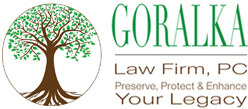Who was it that said, "Those that ignore history are bound to repeat it."? It seems to have slipped my mind, too. Anyway, it is still a good practice to learn from mistakes made in the past to avoid repeating them—including our own—and using them as a study aid for the next time.
For example, your tax return from last year—where is it? Dig it out and take a look. You may find ways to reduce the amount of taxes you are paying so you have more money to invest (and for seniors, more money to spend!).
This was the subject of a recent Investing Daily article titled “Planning 2014’s Taxes with Your 2013 Tax Return.”
Quick! Find the first page of your Form 1040. This is where you want to find areas in which to lessen your taxes. The back page of the first page has itemized deductions, such as mortgage interest, charitable contributions, medical expenses, and others, along with tax credits, which allow limited planning opportunities.
For example, unreimbursed employee expenses may be deducted if they are:
- Paid or incurred during your tax year,
- For carrying on your trade or business of being an employee, and
- Ordinary and necessary.
The IRS says an expense is “ordinary” if it is "common and accepted in your trade, business, or profession." An expense is deemed to be necessary if it is "appropriate and helpful to your business." An expense does not have to be required to be considered necessary.
You may be able to deduct the following items as unreimbursed employee expenses:
- Business liability insurance premiums.
- Damages paid to a former employer for breach of an employment contract.
- Depreciation on a computer your employer requires you to use in your work.
- Dues to a chamber of commerce if membership helps you do your job.
- Dues to professional societies.
- Educator expenses.
- Job search expenses in your present occupation.
- Licenses and regulatory fees.
- Medical examinations required by an employer.
- Your passport for a business trip.
- Subscriptions to professional journals and trade magazines related to your work.
- Tools and supplies used in your work.
- Travel, transportation, meals, entertainment, gifts, and local lodging related to your work.
- Union dues and expenses.
- Work clothes and uniforms if required and not suitable for everyday use.
- Work-related education.
So, what is the take-away from all of this you can use? Grab last year's return and see what you can learn … and save!
Contact your CPA or tax preparer for more information on how to reduce your taxes. Please contact us if you need a referral to someone who can assist you.
Reference: Investing Daily (February 20, 2014): “Planning 2014’s Taxes with Your 2013 Tax Return”
John Goralka is the lead attorney and founder of the Goralka Law Firm, P.C., and is an experienced Sacramento estate planning and tax planning lawyer. For help in Sacramento with estate planning, business planning or tax planning, please contact our office.

